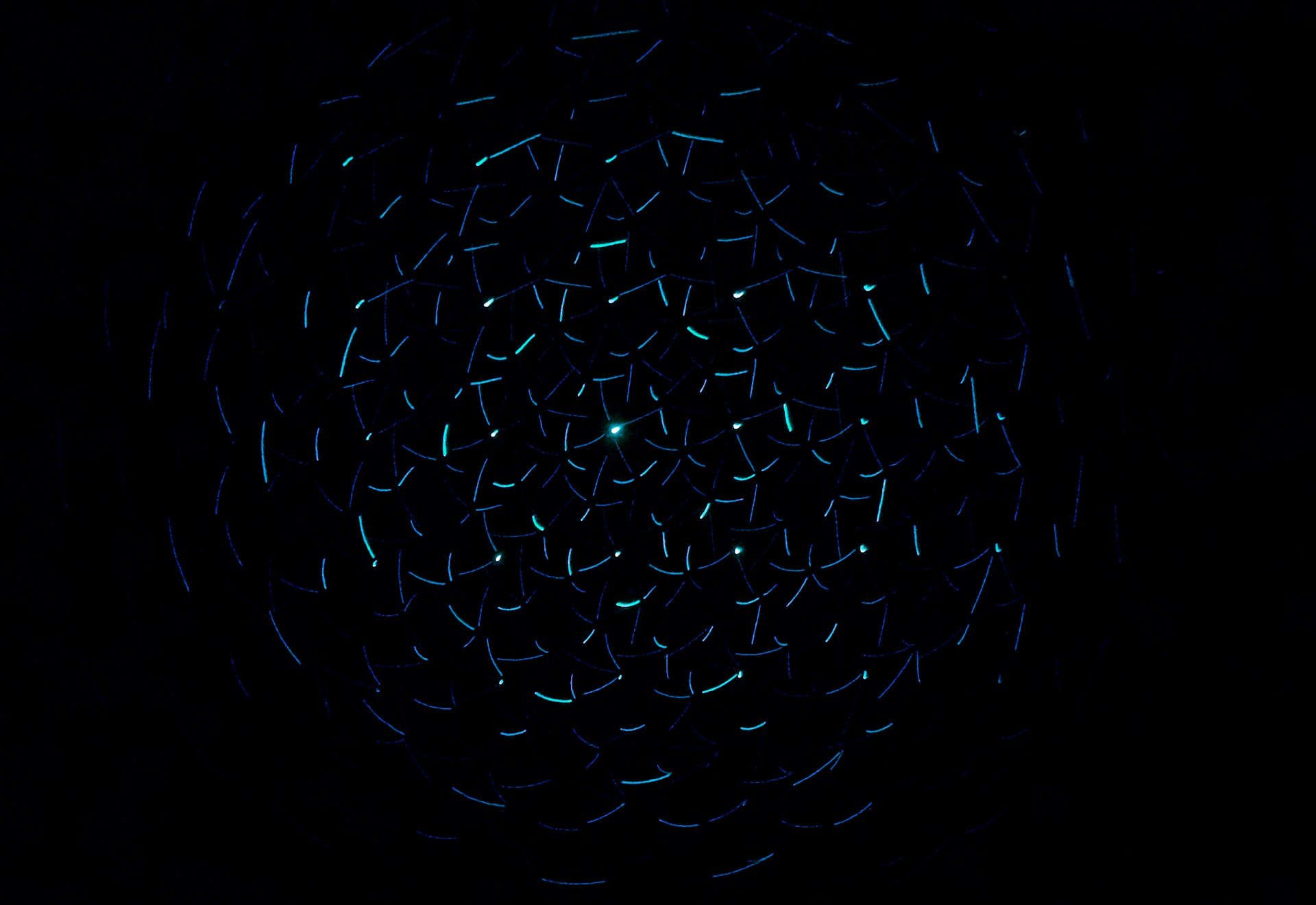Researchers at North Carolina State University, led by Professor Milad Abolhasani, have developed a method to precisely tune the optical properties of quantum dots using light rather than traditional chemical approaches. The team’s work, demonstrates a faster, more energy-efficient, and environmentally sustainable process for controlling quantum dot properties, with potential applications in LEDs, solar cells, displays, and quantum technologies.
Jha, P., Mukhin, N., Ghorai, A., Morshedian, H., Canty, R. B., Delgado‐Licona, F., Brown, E. E., Pyrch, A. J., Castellano, F. N., & Abolhasani, M. (2025). Photo‐Induced Bandgap Engineering of Metal Halide Perovskite Quantum Dots In Flow. Advanced Materials, 37(16). https://doi.org/10.1002/adma.202419668
Quantum dots, tiny semiconductor particles, emit light when excited by energy. The color of this light depends on the quantum dots’ bandgap, which is the energy required to excite an electron from a bound state to a free-moving state. Adjusting the bandgap allows researchers to control the emitted color, but conventional methods rely on chemical modifications or high-temperature reactions, which can consume significant energy and produce inconsistencies.
The new method uses light to drive photochemical reactions that modify the bandgap. The team began with green-emitting perovskite quantum dots and suspended them in a solution containing either chlorine or iodine. These solutions were passed through a microfluidic system incorporating a light source.
Professor Milad Abolhasani from North Carolina State University stated,
“And while we are processing small reaction volumes, the process itself happens very quickly, which means that you ultimately end up producing perovskite quantum dots with tuned bandgaps more efficiently than was possible with previous techniques”.
The microfluidic environment provides precise reaction control by maintaining uniform light exposure across tiny solution volumes of approximately 10 microliters. This ensures that photochemical reactions occur quickly and consistently throughout the sample. The light triggers changes in the quantum dots: in chlorine-containing solutions, the green-emitting dots shift toward the blue spectrum, while in iodine-containing solutions, they shift toward the red spectrum.
“We can adjust the bandgap by controlling the energy delivered through light,” Abolhasani explained. “This allows us to tune the optical properties with a precision and speed that was not possible using previous chemical methods.”
Because the reactions occur in small volumes and under light-driven conditions, the process is highly efficient. Quantum dots with specific, controlled bandgaps can be produced more quickly and with lower energy input compared to traditional high-temperature or chemically intensive methods.
“This approach offers a sustainable route to produce high-quality perovskite quantum dots,” Abolhasani noted. “We are now working to scale up the process for optoelectronic applications, where precise color tuning is critical.”

Adrian graduated with a Masters Degree (1st Class Honours) in Chemical Engineering from Chester University along with Harris. His master’s research aimed to develop a standardadised clean water oxygenation transfer procedure to test bubble diffusers that are currently used in the wastewater industry commercial market. He has also undergone placments in both US and China primarely focused within the R&D department and is an associate member of the Institute of Chemical Engineers (IChemE).



